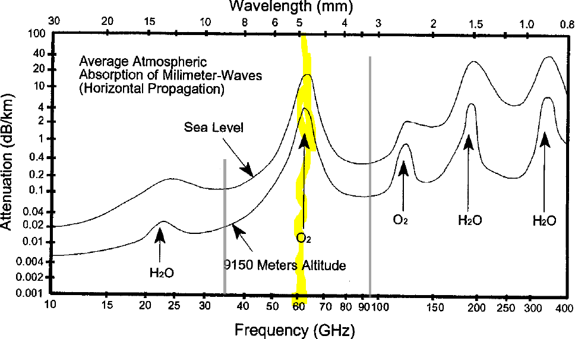Other Parts Discussed in Thread: IWR1443
Hello everyone,
What are your thoughts about implementing "Vital signs application" in 60GHz Frequency Band, considering the following plot that describes the relationship "Attenuation vs. Frequency" showing that at 60 GHz, the mmWave is the most susceptible to the atmospheric attenuation, particularly from the Oxygen in air.
Please share your thoughts on your frequency of choice. Thank you so much,
Regards,
Zhengguo Sun


